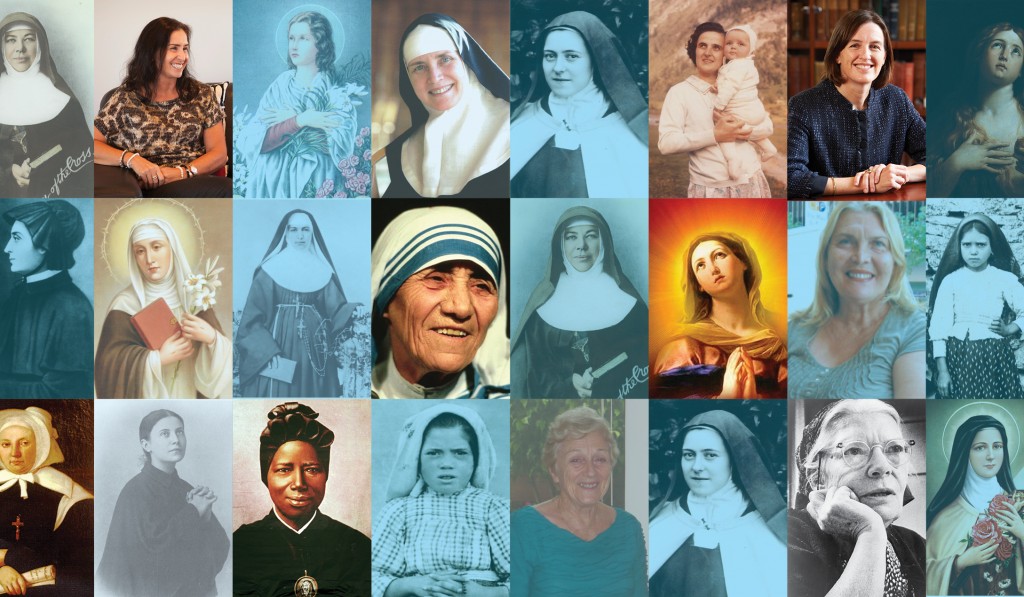To celebrate the role of women in the Church, the e-Record will publish a number of articles in each edition throughout the month of May – often referred to as the month of the Virgin Mary – highlighting the active role and witness that a number of women and organisations from across the Archdiocese of Perth provide in spreading the Gospel.
Archbishop Costelloe continued his response about the work of women in the Church by saying that, for him, women are well placed to understand and evaluate “from within” many of the challenging issues of today.
“Women will, for example, have a better instinctive grasp of both the strengths and the weaknesses of the feminist movement (in all its manifestations). Because of their intimate involvement in the bringing forth of new life, they will be able to offer unique insights into the complex issues surrounding such matters such as abortion, IVF, contraception and other ‘life’ issues.”
A 1999 report on The Participation of Women in the Catholic Church, undertaken for the Australian Catholic Bishops Conference by the Bishops’ Committee for Justice, Development and Peace, Australian Catholic University and the Australian Conference of Leaders of Religious Institutes, found that the dominant issue affecting women’s participation in the Church in Australia was gender equality, recognising the equal dignity of women and men created in the image and likeness of God.
This understanding of equality, the report said, did not imply the sameness of men and women but, rather, their complementarity and mutuality. The report found that the Church was seen to be lagging behind the wider Australian society in recognising the changing role of women as one of the “signs of the times” and affirming the equality of women.
“The very limited participation of women in decision-making at present and the need to increase women’s involvement in decision-making at all levels were constant and major themes,” the Executive Summary states.
It would be a mistake to suggest, said Archbishop Costelloe, that women’s voices should primarily be heard only in relation to women’s issues, or that men’s voices have nothing to contribute to these discussions.
“What we need to hear are ‘voices of wisdom’ on these and all important issues,” said Archbishop Costelloe.
“To the extent that we have created a society, or a culture, or even a Church, in which the voices of women are excluded or disregarded, we have foolishly limited our access to the wisdom we need to confront the many challenges we face,” he said.
The 1999 report also concluded that the issue of the participation of women in the Church is not just a concern for women, but rather an issue for the Church as a whole.
The importance of the role of women in society also featured as a central theme, entitled Women’s cultures: between equality and difference, at a Plenary Assembly of the Pontifical Council for Culture, held in February this year.
In his speech for the occasion, the Pope reiterated the importance of finding “criteria and new ways to enable women to no longer feel like guests, but instead to be full participants in the various areas of social and ecclesial life”.
With reference to the first theme considered in the Plenary Assembly, Between equality and difference: the quest for an equilibrium, Pope Francis remarked that this equilibrium must be harmonious, not merely a question of balance.
“Equality and difference of women – like that of men – is best perceived from the perspective of ‘with’, in relation to, rather than ‘against’,” the Pope said.
“We have long left behind – at least in Western societies – the model of the social subordination of women to men, a centuries-old model whose negative effects are nonetheless not yet fully spent.
“We have also left behind a second model, that of parity, pure and simple, applied mechanically, and of absolute equality. A new paradigm has thus taken shape, that of reciprocity in equivalence and in difference.
“The relationship between man and woman, therefore, must recognise that both are necessary inasmuch as they possess an identical nature but different modalities. One is necessary to the other, since the fullness of the person is thus truly achieved.”
